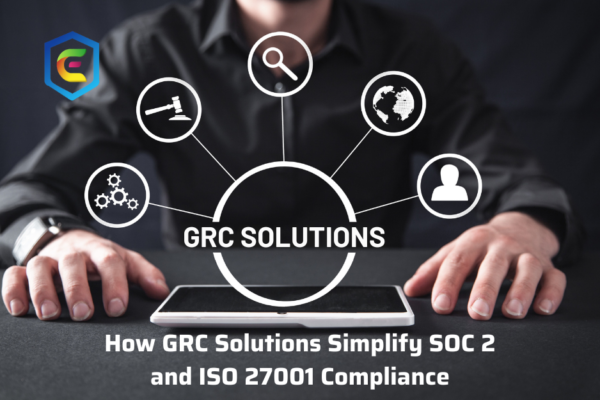
Governance, Risk, and Compliance (GRC) solutions have become indispensable for organizations aiming to meet stringent security and regulatory requirements. SOC 2 and ISO 27001 are two of the most widely recognized security compliance frameworks, ensuring that organizations maintain the highest standards in data protection, risk management, and information security. However, achieving and maintaining compliance can be complex, requiring robust documentation, continuous monitoring, and proactive risk mitigation. This is where GRC solutions come into play, streamlining compliance efforts and making the process more efficient and effective.
How GRC Solutions Simplify Compliance
Centralized Compliance Management
One of the biggest challenges in achieving SOC 2 and ISO 27001 compliance is managing vast amounts of documentation, risk assessments, and audit trails. GRC solutions provide a centralized platform that consolidates all compliance-related information, making it easier to track progress, manage policies, and demonstrate adherence to regulatory requirements.
Automated Risk Assessments and Controls
GRC platforms automate risk assessments by identifying vulnerabilities, evaluating their impact, and recommending corrective actions. Automated controls ensure that security policies and procedures align with compliance standards, reducing the likelihood of non-compliance.
Real-Time Monitoring and Incident Response
Continuous monitoring is essential for both SOC 2 and ISO 27001 compliance. GRC solutions offer real-time tracking of security events, detecting anomalies, and flagging potential risks before they escalate. Built-in incident response mechanisms allow organizations to act swiftly, minimizing the impact of security breaches.
Streamlined Audit and Reporting Processes
Preparing for compliance audits can be overwhelming, requiring extensive documentation and evidence collection. GRC tools simplify this process by generating automated compliance reports, maintaining audit logs, and ensuring that all necessary records are readily available. This reduces the time and effort needed for audit preparation and enhances transparency.
Policy and Procedure Management
Maintaining up-to-date policies and procedures is a critical component of SOC 2 and ISO 27001 compliance. GRC solutions facilitate the creation, approval, and distribution of policies, ensuring that employees remain informed about security requirements and best practices. Automated policy reviews and version control further enhance compliance management.
Employee Training and Awareness
Human error remains a significant factor in security breaches. GRC platforms include training modules that educate employees on security best practices, compliance requirements, and incident response protocols. Regular training ensures that staff members understand their roles in maintaining security and compliance.
Continuous Improvement and Adaptability
Both SOC 2 and ISO 27001 require organizations to continuously improve their security practices. GRC solutions provide insights through risk analytics, compliance dashboards, and trend analysis, allowing businesses to refine their security strategies and stay ahead of evolving threats.
Conclusion
Achieving SOC 2 and ISO 27001 compliance is a complex, ongoing process, but GRC solutions simplify and streamline the journey. By automating risk management, centralizing documentation, facilitating real-time monitoring, and enhancing audit preparedness, GRC platforms enable organizations to maintain compliance more efficiently. Investing in a robust GRC solution not only ensures regulatory adherence but also strengthens overall security posture, building trust with clients and stakeholders.